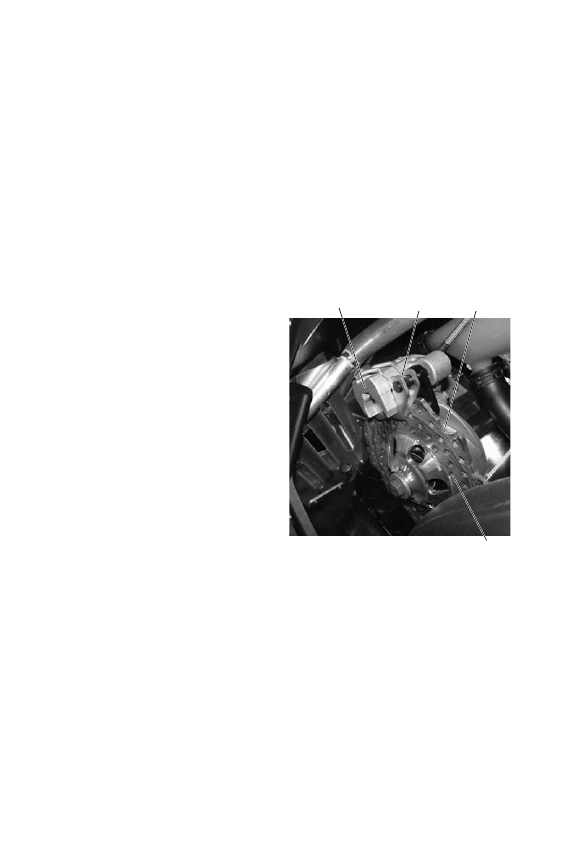Snowmobile Polaris 600 RMK / 600 PRO RMK / 800 RMK / 800 PRO RMK / 800 RMK Assault. Manual - part 23

94
MAINTENANCE
Brakes
Hydraulic Brake Inspection
Inspect the brake lever reserve before each use of the snowmobile. See
page 59.
Brake pads must be replaced when the brake pad material becomes thin-
ner than the backing plate (approximately 1/16 inch or 1.5 mm). A kit is
available for replacing brake pads. See your dealer.
WARNING! Brake failure during operation can result in serious injury or death.
Properly functioning brakes are vital to your safety. Be sure the brake pads do
not drag on the disc and that brake lever travel is not excessive. Always replace
brake pads when the brake pad material becomes thinner than the backing plate
(approximately 1/16 inch or 1.5 mm).
Brake Components
1. Brake Caliper
2. Brake Disc
3. Brake Pad Material (Replace
when thickness is less than
1/16 inch or 1.5 mm).
4. Anti-rattle springs (come
with brake pad kit)
Excessive Lever Travel
Hydraulic brakes are self-adjust-
ing, but if excessive brake pad
clearance develops, bring the
snowmobile to an authorized
POLARIS dealer for inspection
and adjustment.
TIP: The PRO RMK and RMK ASSAULT models are equipped with a lightweight
brake disc that has vent holes. These holes may cause a high-pitched
sound during operation.
2
1
3
4